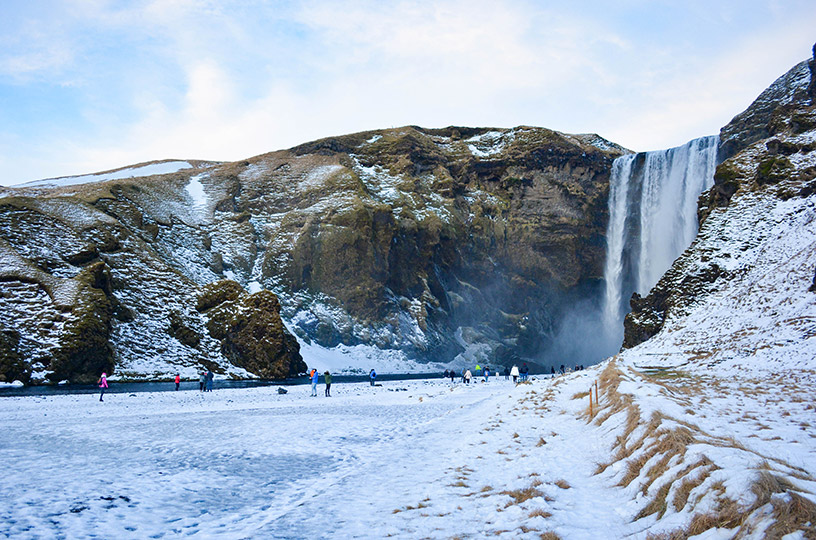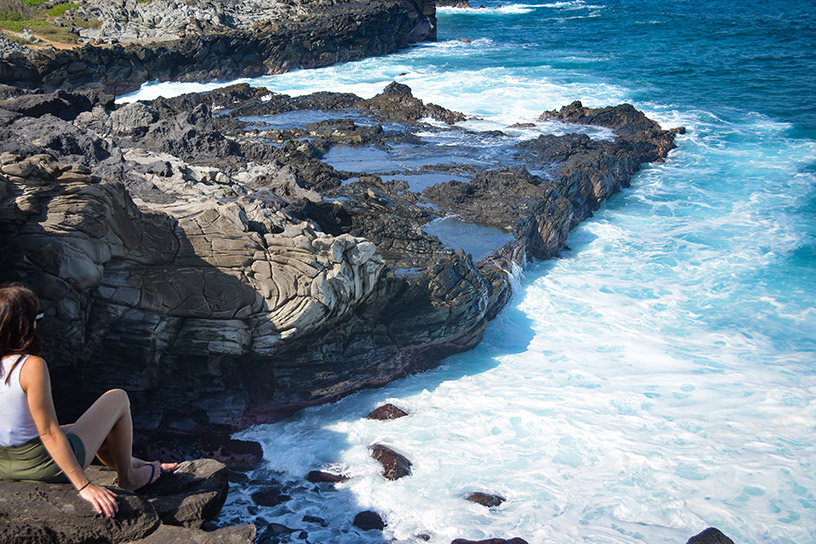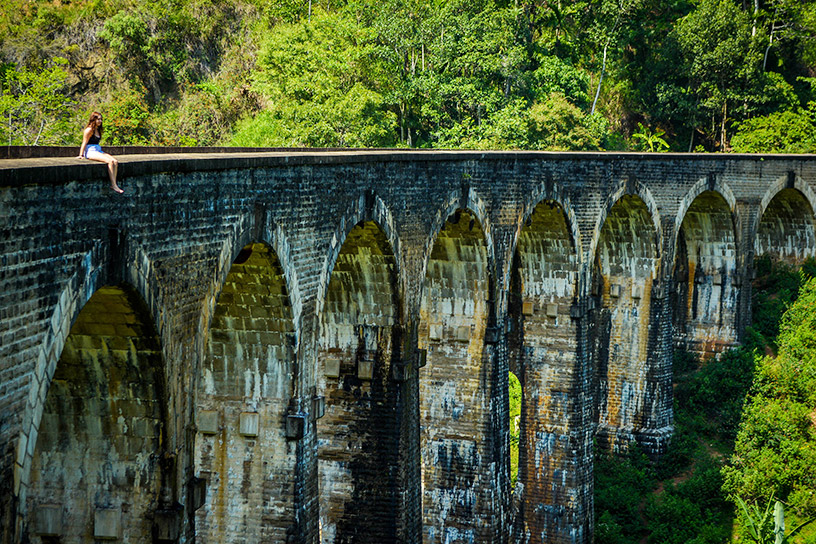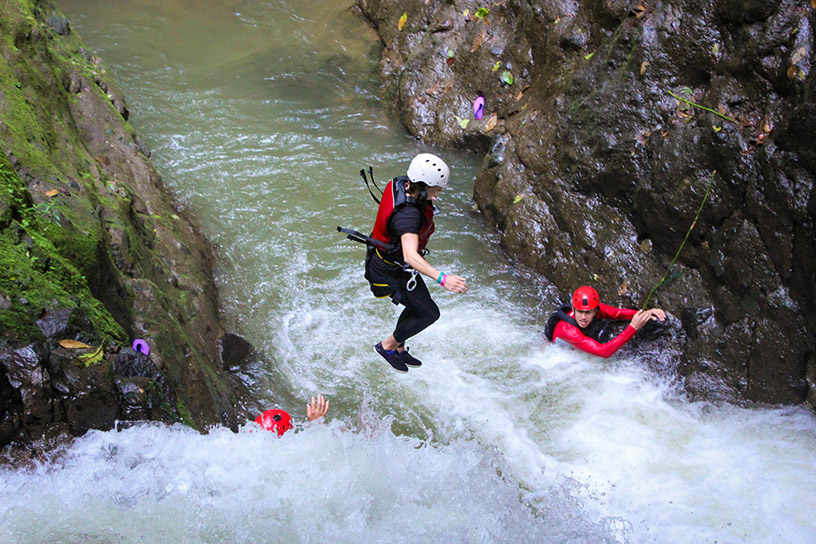What I learnt from 6 months overseas
Six months is a long time to travel non-stop – and you learn pretty quick what works and what doesn’t in the backpacking world. In a six month mostly solo journey from the Hawaiian Islands to South East Asia, I learnt a lot of lessons for enhancing a long term travel experience. This is what I learnt along the way.

You don’t need to plan every detail of your trip
This was a hard lesson for me to learn. I’m the first to admit I’m a planner and I like lists. From my weekends, to making lists of what I have to do at work, to planning my next adventure. But you can’t plan everything on a long trip, and you shouldn’t try to.
Some of my best adventures happened when I left my onward travel plans to the day before. When it got to 9pm and I still didn’t know where I’d be the next day, and where I would sleep tomorrow night. That was all part of the adventure. I could choose to stay longer in a place I loved, or leave earlier if I wasn’t a big fan.

Roll with the punches
Travel can be exhausting. While the idea of travel is glamourous, long term travel is not so much – especially if you’re on a budget. Long bus rides, delayed flights, crowds, queues, and people having loud conversations in your dorm at 2am are all part of the backpacker travel experience. One thing you will need to get you through is patience. Lots of it. And the ability to go with the flow.
The fact is things will go wrong and it will be annoying. It may be your flight getting delayed by five hours, or your bag goes missing, or you get stranded in an Indian airport overnight for 12 long hours without a visa to exit, no money and blood-thirsty mosquitoes (yes, this all happened to me in the space of a week). You just have to learn to roll with the punches and don’t stress about the little things you can’t control that are inconvenient at the time - but aren’t such a big deal in the long run.

There’s a solution to most problems
When I realised my bank cards have been skimmed and $4,000 had been siphoned from my bank account, I was devastated. I went into panic mode as I tried to figure out how I would access money after having to cancel my cards. Luckily I was on a tour at the time and the guide helped me out. She let me use her Skype credit to call my bank, cancel my cards, and dispute the charges. I organised getting money wired to me – for six long weeks as my cards only turned up at overseas when I’d returned home! It wasn’t ideal, but I made it work.
What events like this made me realise is that sometimes you may have to think outside the box – but most travel issues do have a solution. For example, if you’re sick but don’t speak the language, use the Google Translate app to translate what you need at the pharmacy or doctor and show your phone to them. This works for getting bus or train tickets too when no one around you speaks your language.

Have ‘time out’ days
Make sure you take time out from your travels to do absolutely nothing - except sit by a pool, sleep, read a book or aimlessly wander the town. For the first three months of my trip, I didn’t stop. I went from five weeks hiking across the US, then headed into Eastern Europe where early mornings and long distance buses through the Balkans left me drained. I followed this up with a jam packed tour of Egypt featuring 13-hour bus rides and 5am starts and I was absolutely destroyed three months in.
I was tired, cranky, had zero patience and I’m pretty sure I looked terrible. So after Egypt I booked four days in the Cappadocia region of Turkey. I did pretty much all the sightseeing I wanted to do in a day and then just relaxed for the rest of the time. I left Cappadocia feeling rejuvenated and ready to tackle the next adventure. In hindsight, I should have planned more of these “time out” sections rather than rushing from place to place. My biggest travel fail was that I had pretty much planned out my entire trip so it was hard to have these relaxation days because I had to rush off on my next flight or tour.

Packing light makes life way easier
You never need as many clothes as you think you will. You will probably switch between two or three main outfits because that’s what you’re most comfortable in. I basically lived between three T-shirts and shorts for six weeks in South East Asia.
Packing light is something I’ve really struggled with – using the old “but I might need that” or “that would look nice that one night I go out to a really nice restaurant”. And also because my style of travel is going across the globe and experiencing many different climates. But I’m slowly learning how to pack better and lighter. Remember that you can buy most clothing along the way if you need something for a special occasion, or you ruin some of your clothes. Of course, you can do laundry so you really only need enough clothes that will last you about five days or six days before you need to do a load of washing.
The best tip for when you’re packing your bag is go to your laundry basket – and pack what’s in there. That’s often what you wear the most. The way I pack now is lay out everything on the floor so you can see how many jeans, shorts, T-shirts etc you have. Then at least halve your piles. Take a look at what you have and have a serious think about where you would wear them. If there’s any items you think you only might wear on a special occasion, leave it behind.
Always pack a change of clothes in your carry on (and some toiletries)
I used to religiously do this and then I got lazy and forgot and of course that was when an airline lost my luggage. I was in Kathmandu – which was way colder than the humid Sri Lanka I’d just left wearing only light cotton pants and a T-shirt. Luckily I’d carried on a jacket with me. But I had to buy pants and some toiletries when I arrived. The good news is my bag turned up later the next day – but I learnt a lesson to pack a change of clothes (suitable for the climate at my next destination) every time I hop on a plane!

Have access to more than one source of funds
Don’t just rely on one card and some cash. Anything could happen to your card, it could get lost, stolen, skimmed or eaten by an ATM! Always carry local currency, and US Dollars are always a solid choice to have as a back-up. If you have any currency left, make sure you spend or exchange it before you leave.
Bad weather will impact your plans – so you need to be flexible
Another reason not to plan everything is because bad weather can severely impact your plans. You may have days of torrential rain, or fog means you see absolutely nothing at the top of the mountain you just hiked, or you could be caught in a flash flood (it happened to some of my friends in Vietnam)! Aim for some flexibility in your plans in case bad weather strikes.
Just remember that travel is just as much about the journey as it is about the destination. Go with the flow and enjoy the trip! You’re bound to have plenty of amazing stories to share when you get back home.
Lisa Owen is a pint-sized Australian following her dreams to travel to as many places as she can, and loves to share her photography, travel hacks, hiking adventures, and food discoveries along the way. At last count, she has travelled to more than 60 countries in between working in public relations and discovering hidden gems in Australia's great outdoors. Instagram: @thelittleadventurer. Facebook: The Little Adventurer Australia.
The views, opinions and positions expressed by the author and those providing comments are theirs alone, and are meant as travel inspiration only. They do not reflect the opinions of Cover-More Insurance. You should always read the Policy Documents available from your travel insurance provider to understand the limits, exclusions and conditions of your policy and to ensure any activities you undertake are covered by your policy.